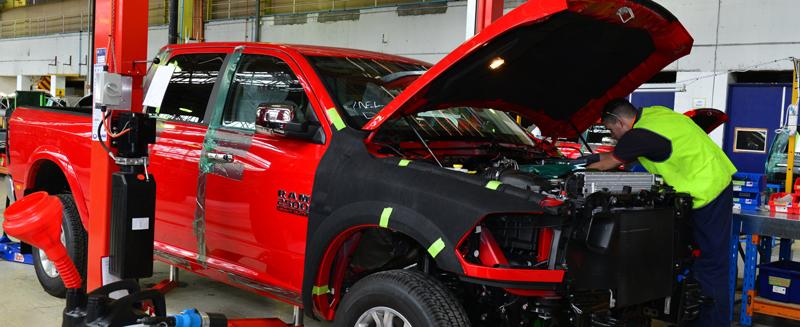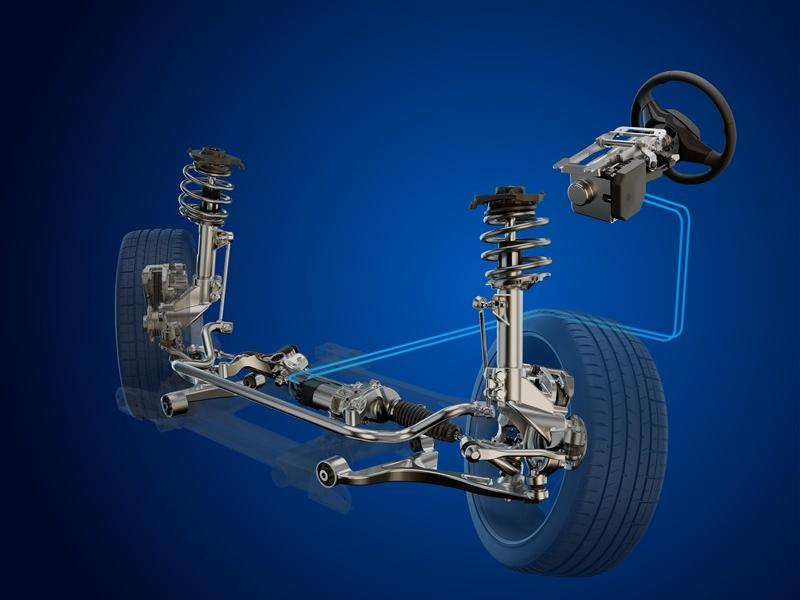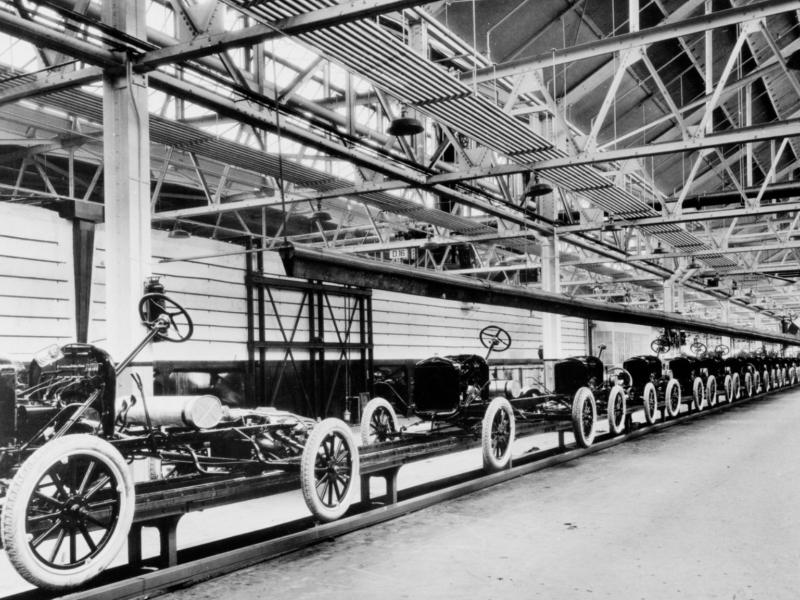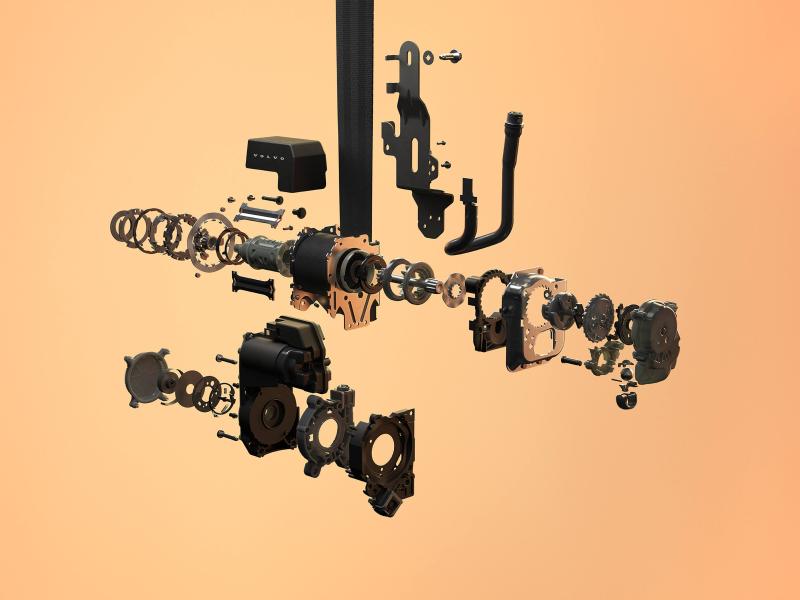Despite being a truly Chrysler USA-approved vehicle offered through all of Fiat Chrysler’s dealerships in New Zealand, the right-hand-drive Ram 2500/3500 models now on sale here actually leave the factory in Mexico in left-hand drive form. Story and photos by Damien O’Carroll
They are then shipped to Australia where the conversion to RHD process takes place. Except converted is far from the right word to describe the process each Ram goes through.
In fact, both Fiat Chrysler and the company they have partnered up with to offer Rams in RHD form strenuously avoid the “C” word altogether, preferring to use the term “remanufacture” to describe the process before being offered for sale in Australia and New Zealand.
And having witnessed it first hand, I can’t help but agree with them.
The “them” I refer to here is, of course, Fiat Chrysler’s Australian distributor Ateco Automotive and a company you may have heard of previously - the Walkinshaw Automotive Group.
Walkinshaw is well known for being the company that takes ordinary Commodores and turns them into fire-breathing HSVs in a process that no-one would ever call “modifying”.
And it is a similar (but even more involved) process that Walkinshaw takes the LHD Rams through upon their arrival in Australia.
New company
Ateco and Walkinshaw have partnered up to form a new company called “American Special Vehicles” or ASV for short (notice a similarity there?) that is responsible for the remanufacturing process at Walkinshaw’s Melbourne headquarters.
While the facility is currently home to the production of HSV vehicles and the remanufacture of Rams into RHD form, it has previously been the site of Australian manufacture for Volkswagen in the 1960s (yes, Beetles!) and the assembly of Nissans until they closed it down in the 1990s.
So it is an appropriate site for this so-called “remanufacturing” process to take place, but what exactly is remanufacturing anyway?
Well, it all started back in 2013 when Ateco approached Walkinshaw with the idea of converting Rams into RHD form. The idea, however, was far more in-depth and complex than a mere conversion, with Walkinshaw taking on the task of engineering the whole process.
This involved sorting exactly what could be reused from LHD form, what could be modified, and what needed to be made from scratch.
This saw Walkinshaw invest more than AU$2.8-million on tooling for the remanufacturing process, including more than AU$1-million with Australian plastics manufacturer Soccobell to produce an all-new RHD dashboard.
The Rams arrive at the ASV facility direct from the factory in Mexico with literally 0km on the clock. They are all built specifically for Australia, with options such as a localised RHD version of the Chrysler Uconnect touchscreen infotainment system installed (actually the same unit used in RHD Jeep Grand Cherokees), as well as a speedometer that reads in km/h.
Once they arrive in Melbourne the Rams undergo what basically amounts to a reversal of the manufacturing process in Mexico.
Cab off
First the cabin is removed from the chassis and sent down a separate production line. The chassis, complete with engine and tray ,rolls down to the area where the LHD steering box and associated hardware are removed and the appropriate RHD mechanicals installed.
The steering box is provided by the same factory that builds the LHD version for Chrysler in the USA, and is an exact mirror image of the original.
More than 400 new parts are used in the remanufacturing process, with the new parts either being developed and engineered by ASV in Australia or OEM parts direct from FCA.
While all the mechanical work is being done on one side of the assembly line, the cabin undergoes some extensive remanufacturing of its own on the other parallel line.
First off, it is stripped out entirely, with the dashboard heading off to be stripped in a separate area.
While this is being done, the firewall is removed, with new RHD firewall sections being welded into place, complying with full Chrysler factory standards.
New dash
The dashboard represents the largest single investment ASV has made in the remanufacturing process, with the entirely new dash being fitted with a mixture of unchanged parts from the LHD dash (the touchscreen and a number of interchangeable ancillaries), parts that have been modified to fit (mostly plastic parts behind the dash, such as ducting) and entirely new parts.
Dash supplier Soccobell has been a long-time OEM supplier to Toyota Australia, producing the dashboard for the Aurion, so they know what they are doing here and it really shows, with the dash being utterly indistinguishable from a factory-made item.
Interestingly enough, ASV chose not to change around the location of the power outlet and the USB port and, in doing so, has made the Ram more ergonomically sensible than the LHD version, with the USB port now being closer to the driver.
Once the firewall has been installed, the interior is reinstalled and the cabin rejoins the chassis at the end of the assembly line. Once it is reattached a technician takes the newly-RHD Ram for a short final sign-off drive before it is ready to be sent to a dealer. ASV has yet to have a vehicle fail to make it through this final sign-off, which is a testament to the stringent process each vehicle goes through.
Flying colours
While it wasn’t required, ASV chose to crash test a RHD Ram to verify the engineering. This was done to ANCAP standards and it passed with flying colours.
The end result of all this – and ASV’s stated aim – is a vehicle that is indistinguishable from a factory-produced one, apart from the steering wheel now being on the other side of the vehicle, that is.
This, along with the fact that Fiat Chrysler is offering it alongside all of its other vehicles at all dealerships, with complete factory backing, servicing and warranty, means that the Ram is every bit as good (and actually probably even better, due to the meticulous nature of ASV’s process) as a factory-produced RHD one would be.
But the best part of all this? It seems that other Rams – including the smaller 1500 and the heavier duty variants of the 2500 and 3500 – share a largely similar structure to the 2500, so wouldn’t prove to be too difficult to remanufacture in RHD.
ASV currently produces 40 Rams a month, but has the capacity to produce far more. A RHD 2500 Powerwagon in full off-road trim in? Yes please…






